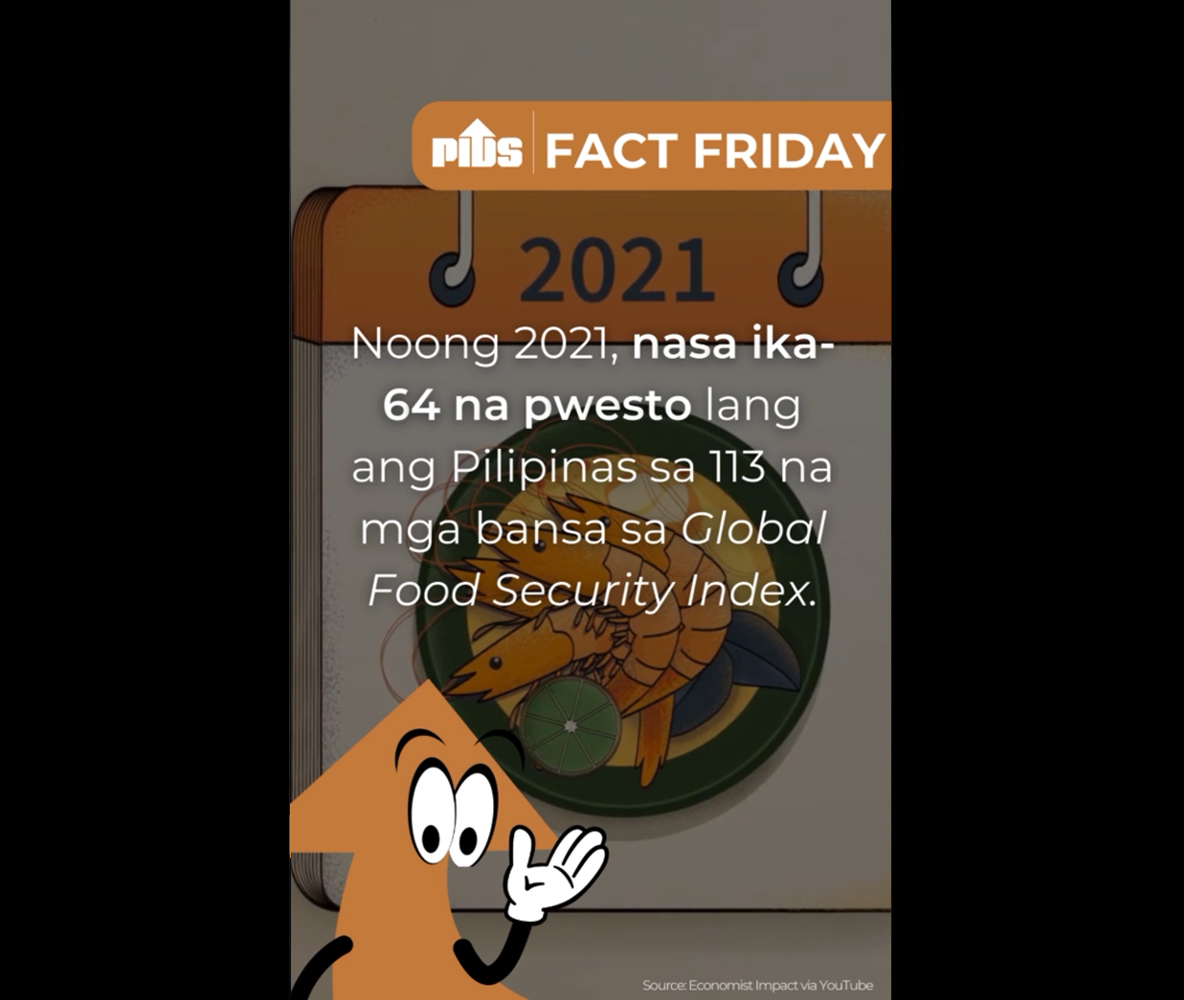DESPITE the need to combat the pandemic and boost economic growth next year, a study by the Philippine Institute for Development Studies (PIDS) showed the President’s 2021 budget reflected different priorities, most notably peace and order and national defense.
In a study titled, Analysis of the 2021 President’s Budget, PIDS Research Fellow Janet S. Cuenca said the budgets of the Department of the Interior and Local Government (DILG) and the Department of National Defense (DND) were larger than those intended for the Department of Health (DOH) and the Department of Social Welfare and Development (DSWD).
The higher budget given to the DILG and DND was mainly driven by the National Task Force to End Local Communist Armed Conflict (NTF-Elcac), which received a budget of P1.08 billion or 0.57 percent of the total budget.
“Based on the detailed analysis done in this study, the 2021 proposed budget gives higher spending priority on maintenance of peace and order and national defense, which placed DILG and DND in higher spots compared to DOH and DSWD in the top 10 departments/recipients for FY 2021,” Cuenca said.
“A close examination of various government documents [e.g., DBM 2020e] indicates that the proposed budget for National Task Force to End Local Communist Armed Conflict [NTF-Elcac] is part of the government’s recovery program to adapt to the post-pandemic life,” she added.
Cuenca explained that the Philippine National Police (PNP) budget for 2021, which is under the DILG, will be higher by 3.21 percent or P6 billion in nominal terms.
She said the PNP budget for its crime prevention and suppression program has the biggest share at 84.8 percent in 2020 and 86.8 percent in 2021. Apart from this, the PNP will also implement new programs.
These new programs include the “end local communist armed conflict” (Elcac) project which, Cuenca said, is the top priority with an allocation of almost P1.1 billion for 2021.
Cuenca said Department of Budget and Management (DBM) data showed that the DILG budget for Elcac forms part of a much bigger budget, the NTF-Elcac, which is set to receive P19 billion next year.
“The NTF-Elcac budget includes support to the Barangay Development Program [Local Government Support Fund] and Elcac budget of the Department of Agriculture, Department of Agrarian Reform, DSWD, and DILG,” Cuenca said. “NTF-Elcac is one of the recovery programs of the government that are meant to help the country adapt to the post-pandemic life.”
In contrast, Cuenca said that while there will be a 39-percent increase to P127.3 billion in the DOH budget for 2021, most of the increase was provided for general administration. The DOH budget for operations was slashed by 26 percent to P1.8 billion in 2021.
The lower budget will lead to lower service delivery subprogram, which incurred the largest budget reduction of about P0.84 billion in 2021. Under this subprogram, the health facilities enhancement program (HFEP) will bear the brunt of the budget drop.
Cuenca also noted that while the budget allocation for critical programs such as family health, immunization, nutrition, and responsible parenting will increase to P12.2 billion in 2021, this will not be enough to cover the needs for Covid-19 vaccines.
“It is inadequate to cover for the cost [i.e., P2.5 billion] of Covid-19 vaccines that will be administered to priority target groups [e.g., medical frontliners in public hospitals, DOH, Bureau of Jail Management and Penology, Bureau of Corrections, DepED, DSWD, and uniformed personnel in Philippine National Police and Armed Forces of the Philippines, as well as indigent senior citizens],” Cuenca said.
“The shortfall will compete with the regular PAPs [projects and programs] [e.g., national immunization, micronutrient supplementation, management of acute malnutrition in vulnerable populations, and family planning] under this budget item,” she added.
In terms of the DSWD budget, Cuenca said the budget will increase by 12.6 percent to P169.2 billion in 2021 from P156.6 billion in 2020. The lion’s share of the budget will be for operations, which represent 98.8 percent of its 2021 budget.
This will finance projects such as the National Household Targeting System for Poverty Reduction, which will see a 5-percent growth in its budget in 2021.
However, the remaining portion of the budget allocation for the DSWD Office of the Secretary budget is “thinly distributed across other programs and projects.” She said the assistance to persons with disability and older persons represents 0.01 percent of the total DSWD Osec budget.
“Programs concerning distressed OFWs and trafficked persons such as services to distressed overseas Filipinos, services to displaced persons [deportees], and recovery and reintegration program for trafficked persons accounts for 0.05 percent, 0.03 percent, and 0.01 percent of the Osec budget, respectively,” Cuenca said.
In a study titled, Analysis of the 2021 President’s Budget, PIDS Research Fellow Janet S. Cuenca said the budgets of the Department of the Interior and Local Government (DILG) and the Department of National Defense (DND) were larger than those intended for the Department of Health (DOH) and the Department of Social Welfare and Development (DSWD).
The higher budget given to the DILG and DND was mainly driven by the National Task Force to End Local Communist Armed Conflict (NTF-Elcac), which received a budget of P1.08 billion or 0.57 percent of the total budget.
“Based on the detailed analysis done in this study, the 2021 proposed budget gives higher spending priority on maintenance of peace and order and national defense, which placed DILG and DND in higher spots compared to DOH and DSWD in the top 10 departments/recipients for FY 2021,” Cuenca said.
“A close examination of various government documents [e.g., DBM 2020e] indicates that the proposed budget for National Task Force to End Local Communist Armed Conflict [NTF-Elcac] is part of the government’s recovery program to adapt to the post-pandemic life,” she added.
Cuenca explained that the Philippine National Police (PNP) budget for 2021, which is under the DILG, will be higher by 3.21 percent or P6 billion in nominal terms.
She said the PNP budget for its crime prevention and suppression program has the biggest share at 84.8 percent in 2020 and 86.8 percent in 2021. Apart from this, the PNP will also implement new programs.
These new programs include the “end local communist armed conflict” (Elcac) project which, Cuenca said, is the top priority with an allocation of almost P1.1 billion for 2021.
Cuenca said Department of Budget and Management (DBM) data showed that the DILG budget for Elcac forms part of a much bigger budget, the NTF-Elcac, which is set to receive P19 billion next year.
“The NTF-Elcac budget includes support to the Barangay Development Program [Local Government Support Fund] and Elcac budget of the Department of Agriculture, Department of Agrarian Reform, DSWD, and DILG,” Cuenca said. “NTF-Elcac is one of the recovery programs of the government that are meant to help the country adapt to the post-pandemic life.”
In contrast, Cuenca said that while there will be a 39-percent increase to P127.3 billion in the DOH budget for 2021, most of the increase was provided for general administration. The DOH budget for operations was slashed by 26 percent to P1.8 billion in 2021.
The lower budget will lead to lower service delivery subprogram, which incurred the largest budget reduction of about P0.84 billion in 2021. Under this subprogram, the health facilities enhancement program (HFEP) will bear the brunt of the budget drop.
Cuenca also noted that while the budget allocation for critical programs such as family health, immunization, nutrition, and responsible parenting will increase to P12.2 billion in 2021, this will not be enough to cover the needs for Covid-19 vaccines.
“It is inadequate to cover for the cost [i.e., P2.5 billion] of Covid-19 vaccines that will be administered to priority target groups [e.g., medical frontliners in public hospitals, DOH, Bureau of Jail Management and Penology, Bureau of Corrections, DepED, DSWD, and uniformed personnel in Philippine National Police and Armed Forces of the Philippines, as well as indigent senior citizens],” Cuenca said.
“The shortfall will compete with the regular PAPs [projects and programs] [e.g., national immunization, micronutrient supplementation, management of acute malnutrition in vulnerable populations, and family planning] under this budget item,” she added.
In terms of the DSWD budget, Cuenca said the budget will increase by 12.6 percent to P169.2 billion in 2021 from P156.6 billion in 2020. The lion’s share of the budget will be for operations, which represent 98.8 percent of its 2021 budget.
This will finance projects such as the National Household Targeting System for Poverty Reduction, which will see a 5-percent growth in its budget in 2021.
However, the remaining portion of the budget allocation for the DSWD Office of the Secretary budget is “thinly distributed across other programs and projects.” She said the assistance to persons with disability and older persons represents 0.01 percent of the total DSWD Osec budget.
“Programs concerning distressed OFWs and trafficked persons such as services to distressed overseas Filipinos, services to displaced persons [deportees], and recovery and reintegration program for trafficked persons accounts for 0.05 percent, 0.03 percent, and 0.01 percent of the Osec budget, respectively,” Cuenca said.












